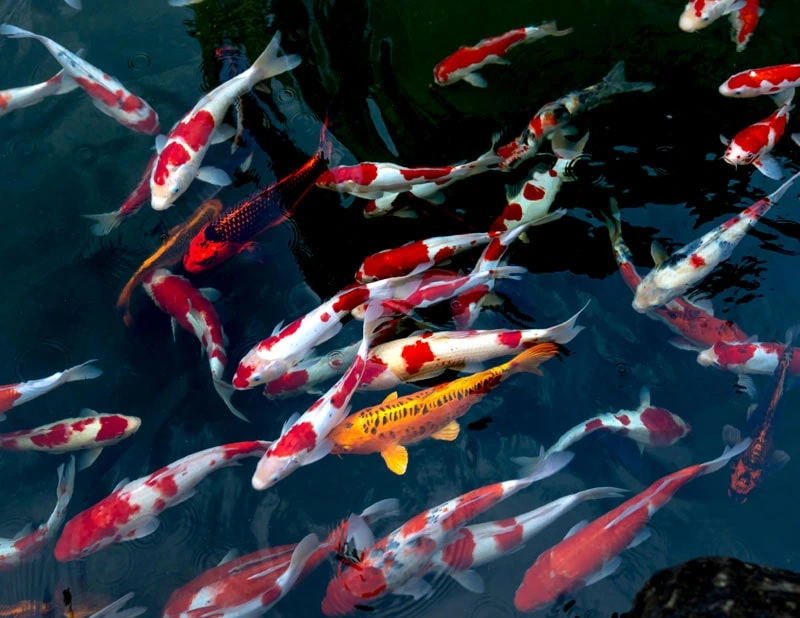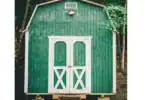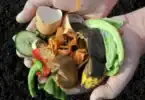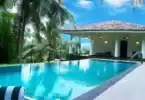Keeping koi in a pond can be a wonderful and rewarding experience, but it requires proper care and maintenance to ensure their health and happiness. Even though Koi are freshwater fish, Koi keepers have learned that low levels of salt in their water can improve their health because the salt can help the fish develop healthy slime coats and promotes good electrolyte intake. Salt can also help ward off parasites that are common in ponds.
High-quality koi pond salt, specifically designed for koi ponds, offers a variety of benefits that can improve the health and well-being of your koi. In this article, I will explore the benefits of using koi pond salt, including improved water quality, and reduced stress and disease.
If you are wondering about the optimum amount of salt to add, or how to choose a good salt product, this article will help out!
The Benefits of Using Pond Salt in Koi Ponds
Investing in a specialized pond salt specifically designed for koi ponds is the best thing you can do to ensure your fish’s health and well-being. Not only does it help reduce stress levels, enabling them to build up their immune system and become more resilient against diseases, but also its optimal concentration won’t cause any harm while providing beneficial health support.
Premium-grade pond salt is an efficient method to combat parasites and skin ailments in koi. It functions as a natural sanitizer, helping rid the water of damaging bacteria while providing healing properties for fish struggling with dermal complications. Its osmotic balance facilitates the optimal functioning of gills and other internal organs. The use of quality pond salt also aids in preserving the overall well-being and beauty of your koi, ensuring that their scales and skin remain vigorous and healthy.
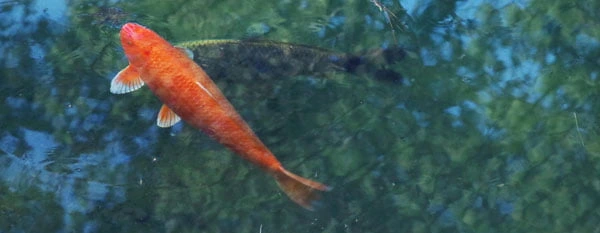
Factors to Look for When Selecting Koi Pond Salt
When it comes to purchasing pond salt that is specifically formulated for Koi ponds, you’ll want to be on the lookout for any of the following keywords or phrases:
- Koi Pond Salt – To guarantee the best possible care for your koi, be sure to select products specially labeled as “koi pond salt.” That way you know it was created specifically with the unique needs of koi in mind.
- High-Quality – Look for products that are very specific about the purity of the salt (Sodium Chloride or NaCl) and that provide details about their formulation.
- pH Balance – To safeguard the well-being of your koi, search for products that promote an even pH level in your pond.
- Parasite Control – To keep your koi free from parasites and pathogens, search for products that are designed to maintain the cleanliness and health of their water habitat. Products that are specific about the pathogens that they treat are ideal selections.
- Natural – In your search for quality and safe products, be sure to look out for items made with natural ingredients and free of any potentially-hazardous chemicals or additives.
- Therapeutic – Look for products that provide therapeutic benefits for fish suffering from skin conditions or infections.
- Non-Toxic – Make sure that the salt you choose is non-toxic and safe for use in a koi pond to keep your fish happy and healthy.
ParaSalt is my top choice for a quality pond salt that is specifically formulated for Koi ponds. The product is very specific about what parasites that it is designed to treat, and the water quality conditions that it is designed to promote. This takes you to the 20 pound container, but it is also available in 10 pound packages for smaller ponds or for maintenance quantities.
Mineral Content Of Different Types Of Pond Salt
The mineral content of between different types of pond salt can significantly affect the water quality and health of koi. Minerals that you may see in pond salt and the reason that they are used include:
- Sodium Chloride – Koi pond salt contains sodium chloride which is the essential element in regulating the osmotic balance of water, enabling healthy functioning gills and organs. Also, this type of salt serves as a natural disinfectant that eliminates harmful pathogens while promoting an immaculate environment for your koi fish to thrive! Pure Sodium Chloride (NaCl) is the primary ingredient of all pond salt products.
- Magnesium – Magnesium plays a crucial role in sustaining the health of koi, as it assists in keeping pH levels balanced and encourages healthy scales and skin growth.
- Calcium – For the optimal health of koi, calcium is imperative. It reinforces their bones, maintains a balanced pH level in the water, and bolsters healthy scales and skin growth…all necessary for keeping them thriving!
- Potassium – Potassium is integral to the well-being of koi, as it aids in maintaining osmotic equilibrium within their habitat and spurs healthy growth in both skin and scales. In addition, potassium enhances a koi’s immunity so they can swim strong for years to come.
- Sulfates – Sulfates are essential for koi, as they are necessary to maintain proper pH levels in the water, support healthy skin and scales growth, and strengthen their immune system.
When selecting salt for your pond, it’s very important to pick one that offers a balanced blend of minerals that are specifically formulate for Koi.
How to Measure Salt Concentration
When determining the salinity level desired for the optimum health of your fish, most Koi pond pros set the range of salt concentration at 0.1% to 0.25%. But how do you figure out how much salt that is in your pond?
Package Guidelines – Pond salt products do come with some dosing information, such as “16 oz. treats 200 gallons”. Of course, that assumes that you are starting with fresh water. It also doesn’t tell you what your concentration would be after adding the salt. You wouldn’t want to add that much if you already started with salted water, so what would you do for pond maintenance?
Parts Per Million – If you like to think of concentration in terms of parts-per-million (ppm) that range is 1000ppm to 2500ppm. You can measure this value very exactly with a refractometer, and while they used to be spendy, the prices have come way down these days. Another option is to use salt water test strips that will get you in the approximate range, but it’s hard to find strips that are very accurate at the levels you need to measure in a pond.
Specific Gravity – For saltwater aquarium people who are used to measuring salt density with Specific Gravity, 2500 ppm is around 1.002 so your hydrometer is probably not very useful for a Koi Pond. I say ‘around’ because a specific gravity value is a density and a PPM value is a weight/mass measurement, so there is a lot of math involved and ambient temperature affects the formula. At this low concentration, you’ll probably be better off using a different method of measurement.
I’ve done some research, and have found what I think to be good choices for measuring salt concentrations within the range that is appropriate for Koi ponds. Use these links as a starting point in your search, and factor in whether your particular pond requirements affect your selection of a measurement device.
This is the only Salt Test Strip product that I have been able to find that measures the low concentration levels desired in a pond. The Salt reading increments on the strip are 0, 100, 250, 500, 1000 and 2000. The strips also tests for 7 other readings that are important in Pond Maintenance such as Alkalinity, pH, Chlorine and several others. You get a container of 150 strips with the colors values printed on the side.
There are a lot of choices for refractometers that will measure salt concentration, but most of them are designed to be accurate for much higher levels of salt that you see in pools or in saltwater aquariums. I like this refractometer because it was specifically calibrated for use in Koi ponds.
How Much Salt Do I Add To My Koi Pond
As a general rule of thumb, it is recommended to add 1 to 2.5 pounds of salt per 100 gallons of water in your koi pond. That corresponds with the recommended range expressed in percentages of 0.1% to 0.25%. However, this may vary based on the specific requirements of your pond and the type of salt you are using.
Remember to follow the manufacturer’s guidelines for your chosen salt and always keep dosage below the prescribed amount since too much salt will be detrimental to your koi fish’s health.
When first adding salt to a pond that has not had salt before, I like to gradually introduce the salt. I start with half the recommended dosage, run the pump and filtration system, and carefully observe my fish for any signs of behavioral changes or signs of stress. I give them a couple days, then add the remaining salt in two more doses, 25% of the total amount each time. It is important to test the salt concentration as you go along to make sure you don’t overshoot your intended concentration.
To guarantee your koi remain in optimal health and safety, it is essential to routinely assess the salt concentration of the water. A reliable test kit or refractometer can help you measure if more salt needs to be added.
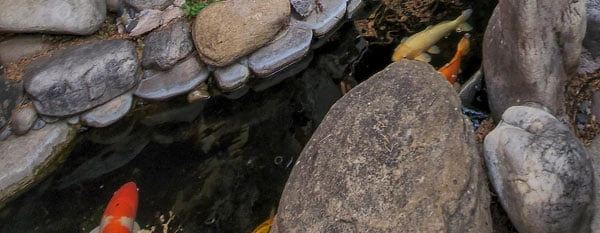
Hospital Tanks
If you have ailing fish and want to try a higher concentration of salt, the best way to do that is via a hospital tank, rather than increasing the salt concentration for the entire pond. Sometimes these are also called quarantine tanks. A hospital tank environment can go from 0.3% to 0.6% concentration (3000 to 6000 ppm) for increased parasite control or to treat extremely stressed fish.
The best way to not shock the fish is to initially set up the hospital tank environment to match the pond environment (identical salt, pH, alkalinity, temperature, etc.). Then you can capture the fish with a net, transfer them gently into the hospital environment. If you are worried about the two environments being a little different, you can use the plastic bag or bucket of water method, allowing a little of the water to mix at a time before releasing the ailing fish into the hospital tank. After giving them a little time to settle in, you start to slowly raise the salt levels to the higher concentration.
Once your fish recover and you are ready to move them back to the pond, take out about 5% of the water and replace it with fresh water. Repeat this process over a series of hours until the salt level in the hospital tank matches the salt level in the pond. Now you are ready to move the fish back to Koi community!
Substituting Other Kinds of Salts
Since the sodium chloride levels in a Koi pond are relatively low, some people wonder if it might be okay to use some other kind of salt, such as table salt, rock salt, pool salt or water conditioner salt to add to their koi pond.
Nope! Don’t do it! Why would you risk your fish and pond?
Other products that are mostly sodium chloride just are not safe for a koi pond. Table salt often has added iodine, which is not healthy for fish. Rock salt doesn’t have the level of purity that is needed for ponds, pool and water softener salt can have additives that are good for their purposes, but not good for Koi fish and pond plants. For instance, water softener salt is often comprised of additives such as ferrocyanide and chlorine, both of which are toxic to fish. Also consider that none of these salt products have the parasite controlling qualities that good pond salt has been designed for.
Monitoring Salt Levels in a Koi Pond
Once you add salt to a Koi Pond, the salt level tends to stay constant, unless you add or remove water.
- If it Rains – Your salt concentration is going to decrease a bit. As long as the pond doesn’t overflow, once some evaporation occurs the levels should slowly go back to your desired concentration.
- If it is Hot & Sunny – Your salt concentration is going to increase. Be sure to add fresh water to replace water that is evaporated as part of your regular maintenance schedule.
- If you have a Slow Leak in your System – Since you are topping off the pond with fresh water, the salt concentration is going to slowly decrease. You can add a little more salt, but at some point you probably need to figure out where the pond is leaking. Fortunately, since the salt concentration is low in the first place, it is unlikely that the escaped salt will damage nearby vegetation.
- If you are doing Water Changes – Any water removed in a water change should be replaced with Saltwater at the same concentration as the pond water.
As with all routine maintenance on your pond, it is important to regularly monitor the behavior and reaction of your fish and other pond life to any inputs you make to their environment. Performing regular water tests, observing your koi’s behavior closely, and adjusting the salinity as needed will guarantee that they live happily and healthily in their aquatic home.
Calculating Additional Salt for Pond Maintenance
One thing that can be hard to figure out is how much salt to add if your saltwater Koi pond gets out of balance on the salt level. Say you had a big rain storm that overflowed your pond and now the salt level is low. Another situation is doing a big water change and things get a little out of balance. What should you do now?
One way to adjust thing is to measure your salt level, then just put in a little salt, wait a while and then test again. “Rinse, wash, repeat” as they say.
Another way is to measure your concentration – and you’ll need a fairly exact measuring device like a refractometer for this – then calculate a value. I haven’t been able to find a pond calculator that I like, so I use the Pool Salt calculator on this site, and set the ‘Desired Salt Concentration’ value to ‘1000’ for 0.1% concentration, or ‘2500’ for 0.25% concentration, and so on. Ignore the messages it gives you about typical Pool salt values because those don’t apply to a pond.
As an example, if I have a 200 gallon pond with a current concentration is 800 ppm and I want it to be 1000 ppm, the calculator says that I need to add about 1/3 of a pound of pond salt.
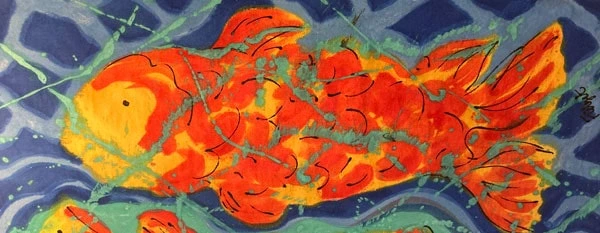
Salt and the Koi Pond Environment
Adding salt to a koi pond should have no adverse to a well maintained pond environment. Koi pond professionals consider a low concentration of salt to be supportive to fish health and parasite control.
Be sure you have all your bases covered to provide the best possible environment for your awesome fish:
- Filtration – Regularly clean or replace filters and maintain the plumbing and moving parts (pump and impeller) to keep a high level of water quality and clarity in your pond.
- Aeration – The filtration pump supplies the basic aeration for the pond, but some setups require additional circulation pumps for the proper amount of water oxidation in your pond.
- pH Level – It is important to monitor your pH level and used fish-safe pH increaser or decreaser products to adjust it if the pH is not within the recommended ideal range of 7.2 to 7.4. Pond experts cite 6.0 to 8.5 as what Koi will tolerate, but staying in the middle of that is the best choice.
- Alkalinity Level – Keeping your alkalinity level within range will help buffer the pH – in other words, it helps pH levels stay more stable.
- Keep Ammonia, Phosphate, Nitrate and Nitrite levels as low as possible.
- Adjust feeding levels to match the ambient temperature in the pond.
Salt added at a low concentration of 0.1% is considered safe for consumption by birds and other critters that may visit your garden, such as squirrels. As anyone that has a ‘water feature’ in their yard knows, the water gets used by more than just the Koi! This amount of salt is also safe for your pond plants and plants located near the edge of the pond.
Table of Contents
Featured Photo by Quang Nguyen Vinh. Koi pond Photo by Madison Inouye.
If you are looking for information on saltwater or reef aquariums rather than ponds, please see Aquarium Salt Safety.

